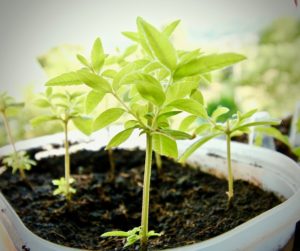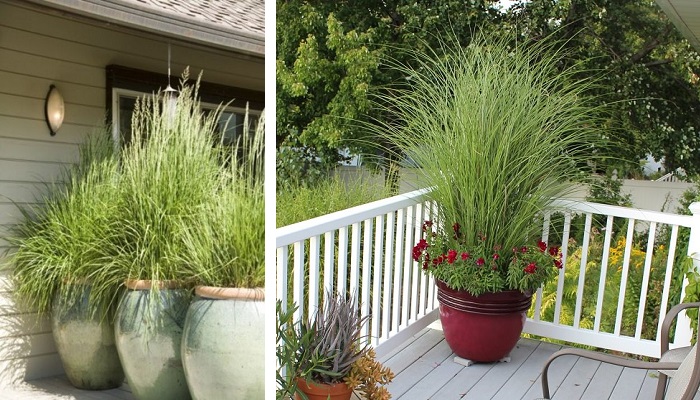Lemongrass is a perennial bushy herb that tastes and smells like lemon. The stem of this plant can be up to one and a half feet high, and the plant looks like a cane. The smooth leaves of the lemongrass are bluish-green color. The flowers of the lemongrass gather in spiky inflorescence, however, this plant rarely blooms.
Pharmaceutical and cosmetic industries use lemongrass, especially its juice. Moreover, people use it for tea and as an ingredient in many culinary dishes.
There are two basic types of lemongrass, and the main difference between the two species is that C. citratus contains the active compound myrcene.
How To Grow Lemongrass
Lemongrass adapts well to all soil types. You can plant it in places where is warmer and lighter, but not where there is too much direct sunlight. Sow the lemongrass seeds in the soil for germination from January to early March. The optimum germination temperature is 20 to 25 ° C, and in these conditions, the plant will sprout in 20 to 40 days. You should keep the soil moist but not too wet. When the seedlings are large enough, you should transplant them into cups and later into pots of appropriate size.
Lemongrass does not tolerate ice and low temperatures. So the plant should be kept in a cool, but not too cold place during the winter. Watering should also be reduced during this period.
There is not much use for young plants, but plants that are several years old and have thick shoots can be used for drying. In order to restore vegetation, you need to trim the low-growing stems in the fall.
Lemongrass Uses
Lemongrass is a good source of folic acid, magnesium, copper, zinc, potassium, phosphorus, iron and calcium, and vitamins A and C. Essential oils of this plant contain citronella, while terpinolene, limonene, and caryophyllenes are present in smaller quantities.
Its leaves and stems are used in alternative medicine for a wide variety of diseases because this plant has anti-inflammatory, antibacterial, antiseptic, antifungal and diuretic properties.
You can make tea out of this plant. The tea is prepared by adding one tablespoon of fresh or dried lemongrass leaves in a cup filled with hot water. Leave it for 10 minutes. Then, strain the liquid and drink it as a hot or cold beverage. The tea has a calming effect, relieves muscle pain, headache cold symptoms, and improves digestion.
You can use the herb’s essential oil to relieve headaches, joint and muscle pain resulting from a cold or flu. However, always dilute the essential oil because it’s quite strong.
You can use lemongrass as an insect repellent. Actually, citronella is a natural ingredient that is FDA approved. And lemongrass is abundant in this ingredient. You can find many mosquito repellent products that contain citronella such as sprays, candles, and creams. That’s why keep your lemongrass pots near the areas you spend most of the time in the summer. The smell of it will keep the mosquitoes away.
Additionally, you can use the plant for your dishes. Lemongrass is extremely popular in Thai and Vietnamese cuisine, but it is also increasingly used in Western cuisine since it can improve the taste of various dishes. Sprinkle it on fish and seafood meals, but use it in your chicken dishes as well.




